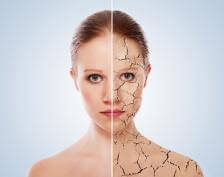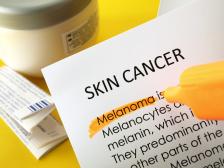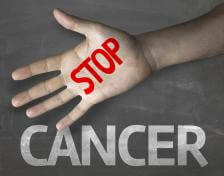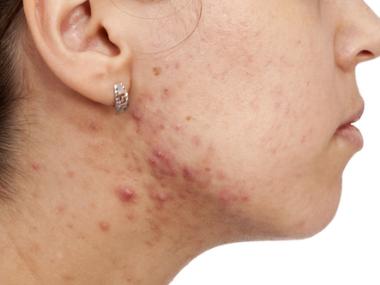How to Prevent Skin Cancer
Most of us have moles and skin spots here and there. But how can you tell when a spot is something you should worry about? May is Skin Cancer Awareness Month, a great opportunity to learn cancer prevention techniques before the summer months officially arrive.
Summer BBQs, pool parties, and beach vacations – we’re all eagerly anticipating fun in the sun activities the summer has in store for us. But all of this sun exposure is not without a price.
Skin cancer is typically developed through sun exposure. Do you know what you need to do in order to protect your skin from cancer? Most of us have spots on our skin here and there. But how can you tell when a skin spot is something to worry about? When should you see your doctor?
May is Skin Cancer Awareness Month…right on cue for the upcoming sun-worshiping months. So I thought it would be a great opportunity to learn about skin lesions, learn how to tell if something you have on your skin is actually worrisome, and how to protect your skin from cancer.
Sponsor: This episode of House Call Doctor is brought to you by the audiobook edition of Total Recovery by Dr. Gary Kaplan. In this informative program, one of the country’s top integrative doctors radically rethinks chronic pain. Listen to an excerpt at www.macmillanaudio.com/TotalRecoveryAudio.
The Types of Skin Cancer
There are 3 main categories of skin cancer, and it’s important to distinguish them. Here are the 3 main types:
-
Squamous Cell Carcinoma
-
Basal Cell Carcinoma
-
Melanoma
The first two are less worrisome. That’s because they typically stay within a single location on the skin. They may simply keep growing until they are surgically removed, but they don’t typically spread through the blood stream or lymphatic system and they aren’t usually fatal.
Melanoma, on the other hand, is a skin cancer that spreads to other organs (or metastasizes). It is the most aggressive and dreaded form of the disease. In melanoma, skin cells that produce pigment called “melanin” overgrow and become cancerous. Melanoma is often dark brown, black, or purple, but can be any color. It can occur at any age and on any area of the body – including hard-to-see areas such as on the genitals, the eyes, lips, and bottom of the feet. In men, it is most often found on the back and in women in the legs or feet.
Skin Cancer Risk Factors

-
Light-complexioned skin
-
Naturally blond or red hair
-
Blue, green, or hazel eyes
-
Family history of skin cancer
-
Having many moles
Symptoms of Melanoma
There’s a mnemonic that is often taught to patients to help them distinguish more serious lesions that can be suspicious for melanoma. We call it the “ABCDE’s” of melanoma,and everyone with moles and various skin spots should be aware of them:
-
A = Asymmetry: If you split the skin lesion in half, is it symmetrical? Does one half look like the other half? Melanoma tends to be more asymmetric.
-
B = Border: Skin spots with irregular borders, jagged edges, or borders that you simply can’t quite delineate easily are considered more suspicious.
-
C = Color Variation: Spots on the skin that contain more color variation – for example, a light and darker shade of brown within the same spot, are more concerning for melanoma.
-
D = Diameter: Skin spots greater than the end of your pencil eraser are also more suspicious.
-
E = Evolving: Even if you a have a skin lesion that is symmetrical, with regular borders, one uniform color, and smaller than a pencil eraser, but if it’s changing in any way (like if it’s growing in size, is now itchy or bleeding, is swollen, or the shape or color is changing over time) then it’s important to show your doctor. Melanoma can appear even in birthmarks.
How Is Skin Cancer Diagnosed?

Those with skin cancer, especially melanoma, are often referred to a dermatologist (a skin specialist) who will then administer the proper treatment. Sometimes if the biopsy didn’t get the entire skin spot, the doctor or dermatologist will need to go back and remove more from the skin to get what we call “clear margins.”
How to Prevent Skin Cancer
Those long days of basking in the sun while slathered in nothing but baby oil are long gone.
We now know that the sun’s rays (and the tanning salon rays) are very harmful for our skin. Sun-kissed skin is no longer the sought-after fad it once was. Not only do the sun’s rays cause wrinkles and premature aging, they can cause your skin cells to go out of whack and become cancerous. The best thing to do is to protect yourself from the get-go – that means starting in childhood.
Here are 5 things you can do to prevent skin cancer:
-
SPF 30 or higher
-
With stated “UVA and UVB” protection on the bottle
-
With the ingredients “titanium” and/or “zinc oxide”
-
Avoid the sun: Avoid sun exposure as much as possible. If you will be spending any time outdoors, stay in the shade whenever possible. Avoid the sun’s peak hours, from 10am to 4pm, when the rays are strongest.
-
Cover up: Wear a hat to protect your head; wear long sleeves and pants as much as possible.
-
Apply sun protection: Apply a good sunblock every single day you are outside – this means even if you are sitting in a car and on cloudy days. Don’t kid yourself: You are exposed to the sun’s rays even when you’re in the shade, so don’t skimp on the sun protection and be sure to reapply every 2 hours. Choose a sunblock with the following properties:
-
Do monthly skin checks: Invest in a full-length mirror and examine your skin once a month, keeping the ABCDE’s of melanoma in mind. If there’s anything suspicious, don’t neglect to ask your doctor.
-
Avoid the tanning salon: There was a time when we thought perhaps the tanning booth’s rays weren’t as harmful as the sun. Now we know better. The salon rays are just as harmful as the sun, if not worse.
Don’t get me wrong, I’m all for having some summertime fun, but that fun doesn’t necessarily have to be in the sun. And if it does, protect yourself and your loved ones by following these easy tips to stay healthy.
Share your ideas and learn more quick and dirty tips with us on the House Call Doctor’s Facebook and Twitter pages! You can even find me on Pinterest!
Please note that all content here is strictly for informational purposes only. This content does not substitute any medical advice, and does not replace any medical judgment or reasoning by your own personal health provider. Please always seek a licensed physician in your area regarding all health related questions and issues.
Melanoma and doctor examining patient images courtesy of Shutterstock.








